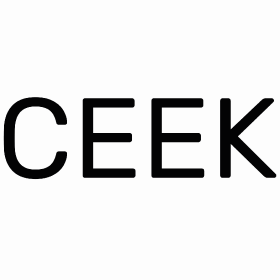We connect you with the best and most reliable agency partners for your projects. All DAN members are thoroughly vetted and ready to deliver exceptional results.

Featured Agencies
Prominent Non-Profit Organization Marketing Agencies of UK
-
Distinction
We help established service brands improve customer experiences, increase revenue, and modernise technology stacks, enabling them to grow faster with more certainty.Services- Digital Product Design
- Digital Strategy
- Mobile App Development
- Software Development
- UX Design
- Web Design
- Web Development
Industries- Education
- Finance
- Healthcare
- IT & Technology
- Non-Profit Organization
- Startup
Select a region, city and industry type to discover the best digital marketing agencies!
DAN Member Agencies
Providing Non-Profit Organization Marketing Services in UK
All non-profit organization marketing agencies in the UK have been vetted and verified against the following criteria:
- Portfolio Quality
- Reliable Services
- Sectoral Expertise
- Team Transparency
If you have any feedback regarding the agencies, please contact us.
-
Catch Digital
HQ: LondonStandard MemberCatch is a digital platform specialist. We focus on building exceptional digital experience platforms as we believe that with the right platform anything is possible.Services- Branding
- Creative
- Digital Product Design
- Digital Strategy
- eCommerce
- Email Marketing
- Mobile App Development
- SEO
- UX Design
- Video Production
- Web Development
11-50 -
Battalion
HQ: UK+2 cities- Chester
- Europe
- Berlin
Gold MemberCollaborating across disciplines, our team integrates strategy, branding, UX/UI design, and technology to deliver impactful results.Services- Branding
- Creative
- Digital Product Design
- eCommerce
- UX Design
- Video Production
- Web Design
- Web Development
11-50 -
Harrison Carloss
HQ: Manchester+1 city- UK
- London
5.0The rating displayed is a weighted average derived from verified reviews across trusted platforms, further validated by the DAN team for agency authority.Gold MemberDon’t bring us the answer, just the problem. We're a strategy-led creative and digital agency with a passion for problem-solving.Services- Digital Strategy
- Software Development
- Creative
- B2B Marketing
- Marketing Automation
- Branding
- eCommerce
- PPC
- SEO
- UX Design
- Web Development
- Web Design
11-50 -
This is Undefined
HQ: London4.9The rating displayed is a weighted average derived from verified reviews across trusted platforms, further validated by the DAN team for agency authority.Gold MemberA digital studio building Apps, Websites & E-stores for exciting startups & forward-thinking enterprises.Services- Digital Product Design
- eCommerce
- Mobile App Development
- Software Development
- UX Design
- Web Design
- Web Development
11-50 -
Distinction
HQ: London+2 cities- USA
- New York
- San Francisco
Gold MemberWe help established service brands improve customer experiences, increase revenue, and modernise technology stacks, enabling them to grow faster with more certainty.Services- Digital Product Design
- Digital Strategy
- Mobile App Development
- Software Development
- UX Design
- Web Design
- Web Development
51-2004 Awards -
Frost Creative
HQ: SouthamptonStandard MemberWE ARE THE DIFFERENCE MAKERS! Do the same old stuff. Get the same old results. Frost is the strategic branding + creative consultancy to help you turn heads by turning up the volume on what makes you unique.Services- Creative
- Online Advertising
- Web Design
- Web Development
- UX Design
- Video Production
- Branding
11-502 Awards -
ProfileTree
HQ: BelfastGold MemberCreates award-winning content campaigns through written word or video production. This is supported by SEO and Digital Strategy.Services- AI Marketing
- B2B Marketing
- Content Marketing
- Digital PR
- Digital Strategy
- eCommerce
- Inbound Marketing
- Marketing Automation
- SEO
- Video Production
- Web Design
- Web Development
11-50
Best Digital Marketing Agencies by Industries in UK
Explore the best digital marketing agencies in UK specializing in the industry you need
- Automotive Marketing Agencies in UK
- Beauty & Cosmetics Marketing Agencies in UK
- Digital Marketing Agencies in UK
- Education Marketing Agencies in UK
- Energy Marketing Agencies in UK
- Fashion & Retail Marketing Agencies in UK
- Finance Marketing Agencies in UK
- FMCG Marketing Agencies in UK
- Food & Beverage Marketing Agencies in UK
- Healthcare Marketing Agencies in UK
- Hospitality Marketing Agencies in UK
- Insurance Marketing Agencies in UK
- IT & Technology Marketing Agencies in UK
- Legal Marketing Agencies in UK
- Luxury Marketing Agencies in UK
- Media & Entertainment Marketing Agencies in UK
- Real Estate Marketing Agencies in UK
- Sports Marketing Agencies in UK
- Startup Marketing Agencies in UK
- Telecommunications Marketing Agencies in UK
- Travel & Tourism Marketing Agencies in UK
- Wellness & Fitness Marketing Agencies in UK
How Do Services and Nonprofit Products Differ From Traditional Ones’ Marketing?
Services and products for nonprofits are often different from those offered to traditional businesses. Nonprofits typically have a limited budget and don’t have the same marketing resources available as traditional businesses. That’s why nonprofits need to be creative with their marketing efforts to ensure that they are reaching the right audiences.
Nonprofits also need to be mindful of the mission and values of their organization when developing their marketing strategy. The marketing efforts must be in line with the organization’s mission and values. A nonprofit marketing company can assist you with this, as doing it independently can be challenging.
A digital marketing agency for nonprofits can provide a wide range of services that can help reach goals. Whether you are looking for email marketing and branding or search engine optimization and public relations services, a digital marketing firm can offer you the tools and guidance you need.
How Do Digital Marketing Agencies Help Nonprofits?
Digital marketing agencies in UK can assist you to develop a comprehensive marketing strategy that focuses on your goals and objectives. This includes analyzing your current marketing efforts to draw a road map to meet your goals.
A good digital marketing company will also create content that resonates with your target audience. This includes preparing a content calendar, designing visuals, and creating videos to reach your target audience.
You can also get help from a digital marketing firm to build an SEO-friendly website. And if you have a better-ranking website, you can reach more people and drive more donations to your organization.
Another important aspect a digital marketing firm can add to your nonprofit is creating a solid email marketing strategy to build long-lasting relationships with your supporters.
Free Listings
of Non-Profit Organization Marketing Agencies in UK
-
YANDA Software & Marketing
We create beautiful, high-performance, accessible websites to help generate leads and increase sales.
HQ: Southampton -
Mud
A web design and development agency, mixing deep technical ability with wide-eyed design creativity, we create digital impressions that stick.
HQ: Bath -
Clifton Web Design
Based in Bristol, UK, creating bespoke, user-friendly websites tailored to meet the unique needs of businesses across the UK.
HQ: Bristol -
Rouge
Rouge is a UK-based digital design agency. We create better websites for B2B and non-profit organisations.
HQ: Reading -
WADEDIGITAL
WADEDIGITAL are experts in future forward web design, web development, digital marketing, e-commerce and design for business.
HQ: Southampton -
Rubber Duckers
You do great work. Your website should reflect that. We're a small, dedicated team specialising in web design and visual content to build sites.
HQ: Southampton
























































